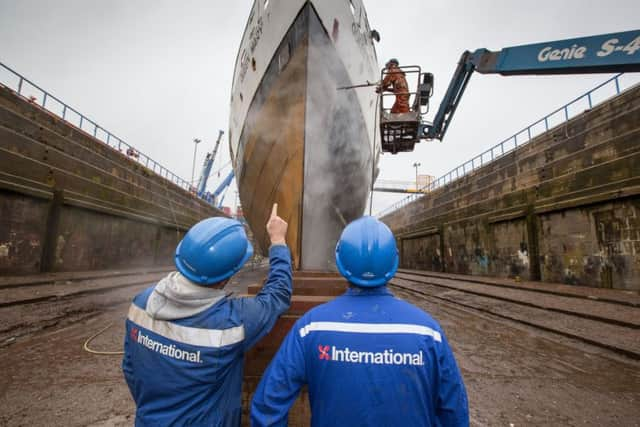Experts produce digital scan of historic Queen Mary steamer


Experts at the school of simulation and visualisation, part of Glasgow School of Art, have produced detailed scans the 1930s passenger ferry while she was dry-docked in Greenock.
Using the latest laser scanning technology, one million harmless laser beams per second were fired at TS Queen Mary to create a precise 3D image.
Advertisement
Hide AdAdvertisement
Hide AdThe image will be compared to future scans to monitor rates of decay or damage over the years. The precise measurements can then be used to accurately repair and conserve the steamer.


The Queen Mary was launched in 1933 and used for more than 40 years to take passengers on trips from Glasgow to destinations such as Dunoon, Rothesay, Millport and Arran.
After it was retired from service it was moved to the port of Tilbury in Essex but a charity, named Friends of TS Queen Mary, raised more than £300,000 to begin work to restore the ship and berth it permanently on the Clyde as an entertainment and education venue.
The school has been working with Historic Environment Scotland to create 3D laser-scanned images of structures and sites of historic importance for the past ten years.


Team member Alastair Rawlinson said: “The TS Queen Mary struck a chord with us. It’s a ship of historical importance in the UK and right here on our doorstep. The first time she was dry-docked in almost 20 years was an unmissable opportunity for us to get down there and scan her.”
Built by the respected Dumbarton shipbuilder William Denny & Bros Ltd, she was the last boat built for excursion sailings from Glasgow city centre to resorts along the west coast of Scotland.
She sailed daily from Glasgow Bridge wharf to Dunnoon and Rothesay, with non-landing excursions to Arran and Skipness.
This service perceived until 1970, when she was transferred to Gourock. By then, the Queen Mary was one of only two Clyde steamers still in operation.
Unlike the paddlesteamer Waverley, the Queen Mary was turbine-powered. With a passenger capacity of 2000, she was the largest excursion steamer on the Clyde.
